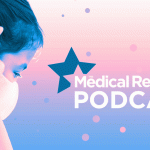Despite our best (and worst) containment efforts, SARS-CoV-2 may slip the net
 Facts about SARS-CoV-2 have been expiring faster than you can write them down.
Facts about SARS-CoV-2 have been expiring faster than you can write them down.
First there was no human-to-human transmission, then there was; no healthcare workers were affected, then they were; there was no asymptomatic spreading, then there was, then there wasn’t again, and now we’re not sure.
Hopefully by the time you read this, the figures of 75,000 confirmed cases and 2000 deaths won’t seem quaintly low.
One question probably still in play is whether the containment measures – harsh as some of them are – can stop the virus establishing itself and becoming endemic around the world, like the other four human coronaviruses, adding to the respiratory disease burden.
No less than the director of the CDC, Dr Robert Redfield, believes they can’t: “This virus is probably with us beyond this season, beyond this year, and I think eventually the virus will find a foothold and we will get community-based transmission,” he told CNN.
Associate Professor Ian Mackay, a virologist at the University of Queensland, agrees.
“My opinion is it will be an endemic coronavirus,” he tells TMR. “I think the work that China has done with these unprecedented community-wide quarantines and isolations have definitely slowed the virus’s spread internationally – great for us, maybe not so great for China.
“But there’s still so many cases, and it’s so transmissible, it will probably be something we see remain among us forever, becoming another one of our human coronaviruses down the track.”
Some widely reported modelling has predicted the virus will infect two-thirds of the world population. Professor Mackay says that while scary, those predictions aren’t wild.
“Not at all. They’re based on the data to hand and those numbers are a bit wobbly. Most of them are coming from China, and it depends how they report the disease and how they’re diagnosing it, and that’s changed frequently. The models are our best understanding of what will happen in a population that doesn’t have any immunity. That could all change, but equally it could be spot on. So we need to plan for what could likely happen based on what those models are telling us.”
It’s “certainly one of the possibilities” that SARS-CoV-2 will become endemic, says Dr Katherine Gibney, an infectious diseases and public health physician and medical epidemiologist working at the Doherty Institute and Austin Hospital in Melbourne.
“Obviously it’s been very widespread in Hubei province and really moved through that population and been exported to lots of other places in China,” Dr Gibney tells TMR. “But interestingly they haven’t had the huge case numbers that Hubei has. I guess we’re not sure whether they’re still just building up into an epidemic or whether the very strict social distancing policies have been effective in containing it.
“Hong Kong, Japan and Singapore all have reported some community-based transmission, so it’s possible that it’s fairly well established in those populations. We won’t know for a little while, particularly as a lot of cases are quite mild and might not present for medical care.”
It certainly isn’t time to give up trying to contain it, she says.
“If it continues to bubble away in lots of countries, eventually you’d expect an importation into Australia that we don’t catch [at the border]. The advantage of continuing a really strong policy of trying to contain it is that we might be able to delay the introduction and maybe there’ll be either a vaccine, although that will probably take a while, or we’ll prove some of the antivirals are effective.
“Or we might, instead of having a really wildfire epidemic, have more of a slow burn that doesn’t impact the health services much.
“So there are lots of good reasons to try and delay it coming in, even if at the same time we need to plan for the fact that it may well become established.”
Professor William Rawlinson, a senior medical virologist with NSW Health Pathology, is somewhat more optimistic, though reluctant to predict the future.
“The current lack of transmission within Australia is heartening and I think the infection control measures and the quarantining have made a difference,” he says. “If that continues and public health advice is taken, there’s a good chance that Australia, for example, will have a minimal number of infections. If public health advice is not taken and if there continues to be spread throughout the world it could become established in some countries.
“The interesting thing is that in China, if you look at the Wuhan epidemic curve, it did start to drop. Then they changed the case definition and had a kick-up of 15,000 overnight, but it has levelled and continue to drop. So if that’s the way it’s behaving, you would hope it might disappear from the world in the way that SARS did.”
SARS-CoV-2 has some similarities with the 2003 Severe Acute Respiratory Syndrome, which was successfully contained, and some differences.
Both viruses can bind to ACE2 receptors in the lungs to cause pneumonia. This makes SARS-CoV-2 different from the other human coronaviruses, which mainly stay in the upper respiratory tract (HCoV-NL-23 can cause laryngotracheobronchitis or croup), causing around 20% of common colds every year.
But while a large proportion of SARS cases were severe and about 10% of them were fatal, the new virus causes a broader spectrum of illness severity, from a mild cold to acute respiratory distress and multi-organ failure.
The case fatality rate appears to be in the low single digits. This is smart from the virus’s point of view, since a highly lethal virus makes a great movie – hello, Contagion – but is more likely to wipe itself out. The novel coronavirus from 2012, Middle East Respiratory Syndrome, killed about 40% of patients, and we don’t hear much about MERS now.
SARS-CoV-2’s R0, or average transmissions per infected person, is estimated at between 2 and 3, comparable to SARS (and higher than influenza). Yet SARS infected around 8500 people in eight months, and SARS-CoV-2 has hit almost 10 times that number in as many weeks.
“Certainly SARS was more severe, so it was easier to find the cases and to put them in isolation and to stop onward transmission,” Dr Gibney says. “Whereas here there’s quite a lot of quite mild cases. It’s possible that they’re responsible for a lot of the transmission and they’re a lot harder to control once the virus is in a population.
“Even if you ask people to stay at home if they develop symptoms, if the symptoms are very mild that’s quite a hard behaviour to get people to comply with. In Australia we ask people who’ve got flu not to go to work and they still do. So that is a problem in terms of it potentially becoming more widespread.”
SARS-CoV-2 can be spread by those with very mild symptoms, but whether an asymptomatic person can shed the virus hasn’t been established, nor is it known whether it can be spread through the air as well as via droplets. It’s likely, however, that the majority of transmission occurs via droplets from coughs and sneezes, says Professor Mackay.
As to who gets what sort of illness, Professor Rawlinson says SARS-CoV-2 is behaving like other coronaviruses in some respects and like influenza in others.
“It mainly causes a sore throat and a cold, then there’s a group who get pneumonia,” he says. “And that group seems to be larger than with the other coronaviruses, because some patients with less severe illness still have changes on their CT scans. So it does seem to have a tropism for the lower respiratory tract.
“Then there’s a group of people who die, sadly, and they seem to be much more like the groups that are severely affected by influenza: people with diabetes, immune suppression, heart disease, chronic lung disease.
“But the other difference with this coronavirus – so far – is that we’re not seeing the very young affected. There’s been no one severely affected below the age of nine.”
Among the young and healthy, the most prominent death has been that of Dr Li Wenliang, the ophthalmologist who warned colleagues about seven SARS-like cases in a group chat on December 30 and was disciplined by the Public Security Bureau for spreading rumours and “disturbing the social order”. Dr Li died of COVID-19 five weeks later aged just 34.
Professor Mackay says the type and number of exposures might affect disease progression.
“Probably in his case and in cases among healthcare workers, they’re seeing not just a one-off contact but possibly frequent contacts with multiple cases,” he says.
“More virus per dose or more frequent doses could mean disease progresses more quickly or to a more severe state. Or it may mean there’s more risk of the virus getting delivered straight to the lungs rather than the upper respiratory tract, because there clearly is virus replicating not just in the lungs but in other sites in the body as well.”
Should SARS-CoV-2 become endemic, it’s unlikely to become another seasonal shape-shifter like influenza, with an annual guessing-game/race to produce the right vaccine.
“The coronaviruses are quite different to influenza viruses,” Professor Rawlinson says. “They do mutate. We have seen mutations in sequences that have been done on this virus in America and Australia and elsewhere. But those mutations are fairly minor and don’t appear to be of huge significance. It tends to mutate at individual sites.
“Coronaviruses in general, in most animal species, don’t tend to undergo the same gene rearrangement that influenza viruses do because influenza has a segmented RNA genome, whereas coronaviruses have a large single RNA genome. So even though in some ways we talk about similar epidemiology, they’re very different viruses genetically.”
Professor Mackay agrees: “There hasn’t been wholesale change to the virus as such, so those variants may not yet mean anything in terms of clinical severity or transmissibility or anything important like that. But there’ll be genetic variants that are interesting to track from a point of view of where the virus is in different parts of the world.”
All aboard
It’s hard to imagine a worse holiday than being trapped on a large floating petri dish as one by one your fellow passengers succumb to a novel pathogen.
That was the fate of thousands on the Diamond Princess in mid-February, still moored in Yokohama Bay and awaiting evacuations and further quarantine. At the time of writing, there were more than 600 firmed cases on board, all stemming from a single passenger.
Dr Gibney says, diplomatically, that there are “lessons to learn” from the Diamond Princess experience.
“Hopefully we’ll find a lot more about the whole spectrum of disease and how many people are infected that don’t develop any symptoms and how many people have very mild symptoms,” she says.
“I think [it shows us] not take it lightly because there has been so much transmission on that ship. Certainly a lot of lessons to learn.”
Professor Mackay goes a little further.
“I’m not a bioethicist, but I think keeping people in a site like that with lots of surfaces on which virus can be shared, where people are in close contact sharing the same air, perhaps even using the same toilets and facilities, is not the best way to have dealt with this virus.
“It would have been better to get these people out into facilities purpose-built for isolation and quarantine as soon as possible.”
It must have been galling for them to hear that hundred of travellers on the Westerdam were allowed to dock in Cambodia and disperse home, despite also having at least one infection in their midst.
Professor Rawlinson says the Westerdam shows why governments “need to be cautious, take good public health advice and take the population with them, so that people do self-declare and accept the quarantining and all the inconvenience”.
Other measures including travel bans like Australia’s and China’s drastic containment policies have been criticised as unethical and counterproductive for public health.
There has also been criticism of the Chinese government’s initial handling of the outbreak, and more recently its published numbers; but Professor Mackay believes some of that criticism is unwarranted.
The virus was sequenced in “absolutely record time” within a fortnight in the middle of flu season, which would have masked the new illness, he says. “I’m not really sure that any public health system in the world would have picked up this virus, isolated it, and sequenced it any faster than what China has done.”
Communication technology has also changed since the first SARS, leading to a spread of false information that the WHO has called an “infodemic”. While the organisation has put pressure on tech companies to clean up their act, Professor Mackay says public health bodies need to actively fight nonsense while they fight the virus itself.
“There’s been an overwhelming amount of information that is almost impossible to keep up with,” he says. “But there’s also an overwhelming amount of rubbish information, of conspiracy theories. Those tinfoil-hat-wearing people have really come out of the woodwork and introduced a lot of fear and anxiety.
“It’s up to the big public health figures to come out and combat those rumours.”




